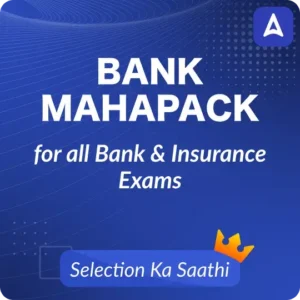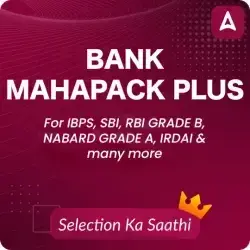Directions (1-5): Study the information carefully and answer the questions given below
Eight persons A, B, C, D, E, F, G and H are going on holidays in four different months i.e. January, March, April, May on two different dates i.e. 13th and 22nd but not necessary in same order. C goes in the month which has even number of days. Two persons go between C and F. B goes just before F. More than four persons go between B and D. H goes before A and after E. A goes in the month which has even number of days. G does not go on odd number date of the month. G goes after C.
Q1. Who among the following person goes on 13th march?
(a) B
(b) F
(c) E
(d) H
(e) None of these
Q2. How many persons go between F and G?
(a) Four
(b) Three
(c) Two
(d) More than four
(e) None
Q3. Who among the following person goes on 13th January?
(a) C
(b) D
(c) B
(d) A
(e) None of these
Q4. Who among the following person goes just before D?
(a) G
(b) C
(c) A
(d) H
(e) E
Q5. Four of the following five are alike in certain way based from a group, find the one who does not belong to that group?
(a) F
(b) H
(c) A
(d) G
(e) C
Directions (6-10): Study the following information carefully and answer the questions given below:
In a certain code language
‘Wanted minority People’ is written as ‘ew or le’,
‘Education wanted higher’ is written as ‘in ew no’,
‘People leader residence’ is written as ‘sd le dr’,
‘Education feedback wanted’ is written as ‘db ew no’.
Q6. What is the code for ‘wanted’?
(a) ew
(b) or
(c) le
(d) no
(e) None of these
Q7. What is the code for ‘Leader’?
(a) sd
(b) le
(c) dr
(d) in
(e) Can’t be determined
Q8. What does ‘db’ stand for?
(a) Education
(b) residence
(c) minority
(d) feedback
(e) None of these
Q9. Which of the following may be the code for ‘people city residence’?
(a) le yt dr
(b) le yt ew
(c) sd dr le
(d) or le dr
(e) None of these
Q10. What is the code for ‘minority’?
(a) or
(b) le
(c) ew
(d) in
(e)None of these
Directions (11-14): Read the following information carefully and answer the given questions.
There are five friends, B, E, H, K and N, each of them got different number of chocolates distributed in a birthday party. K got 7 more chocolates than B. N got more chocolates than three people. E got lowest number of chocolates amongst all. H got less chocolates than N. E got number of chocolates, which is an odd number. K got 65 chocolates. The person who got second lowest number of chocolates got 3 less chocolates than B.
Q11. Who among the following got the third lowest number of chocolates?
(a) B
(b) H
(c) K
(d) N
(e) Can’t determined
Q12. What will be the possible number of chocolates N have?
(a) 66
(b) 57
(c) 58
(d) 62
(e) 71
Q13. Who among the following got more chocolate than N?
(a) K
(b) E
(c) B
(d) E
(e) Can’t determined
Q14. What is the possible number of chocolate E got?
(a) 52
(b) 56
(c) 53
(d) 57
(e) 60
Q15.How many pairs of letters are there in the word ‘ECONOMIST’, each of which have as many letters between then in the word as they have between then in the English alphabet?
(a) Four
(b) One
(c) Two
(d) Three
(e) None
Solutions
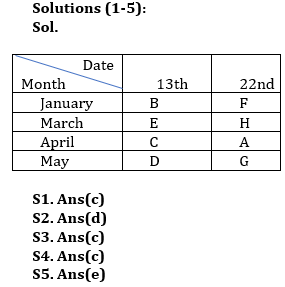
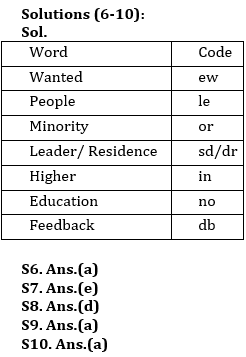
Solutions (11-14):
Sol. K (65) > N > B (58) > H (55) > E
S11. Ans.(a)
S12. Ans.(d)
S13. Ans.(a)
S14. Ans. (c)
S15. Ans.(d)
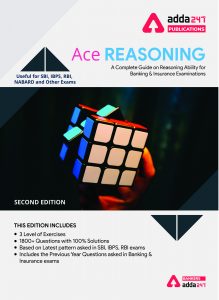


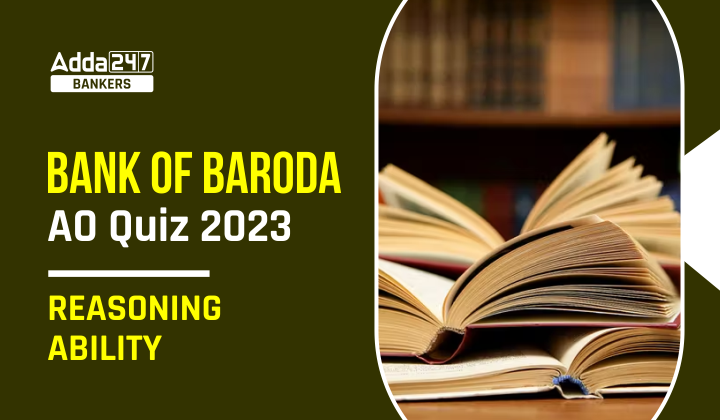

 GA Capsule for SBI Clerk Mains 2025, Dow...
GA Capsule for SBI Clerk Mains 2025, Dow...
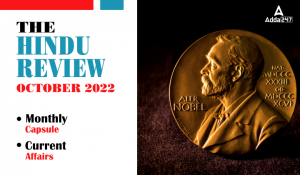 The Hindu Review October 2022: Download ...
The Hindu Review October 2022: Download ...
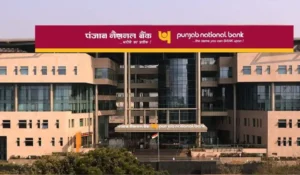 PNB LBO Syllabus and Exam Pattern 2025, ...
PNB LBO Syllabus and Exam Pattern 2025, ...
